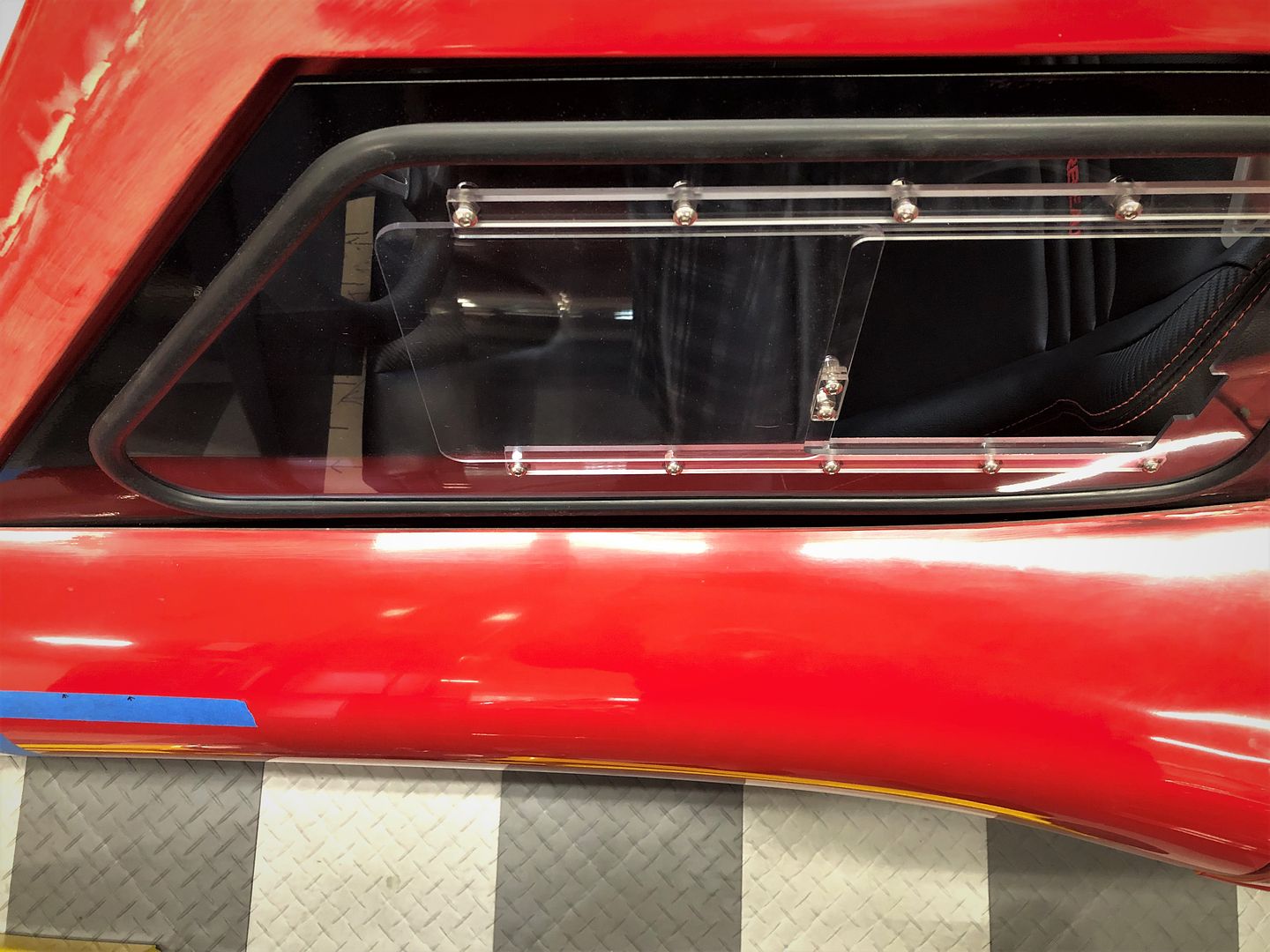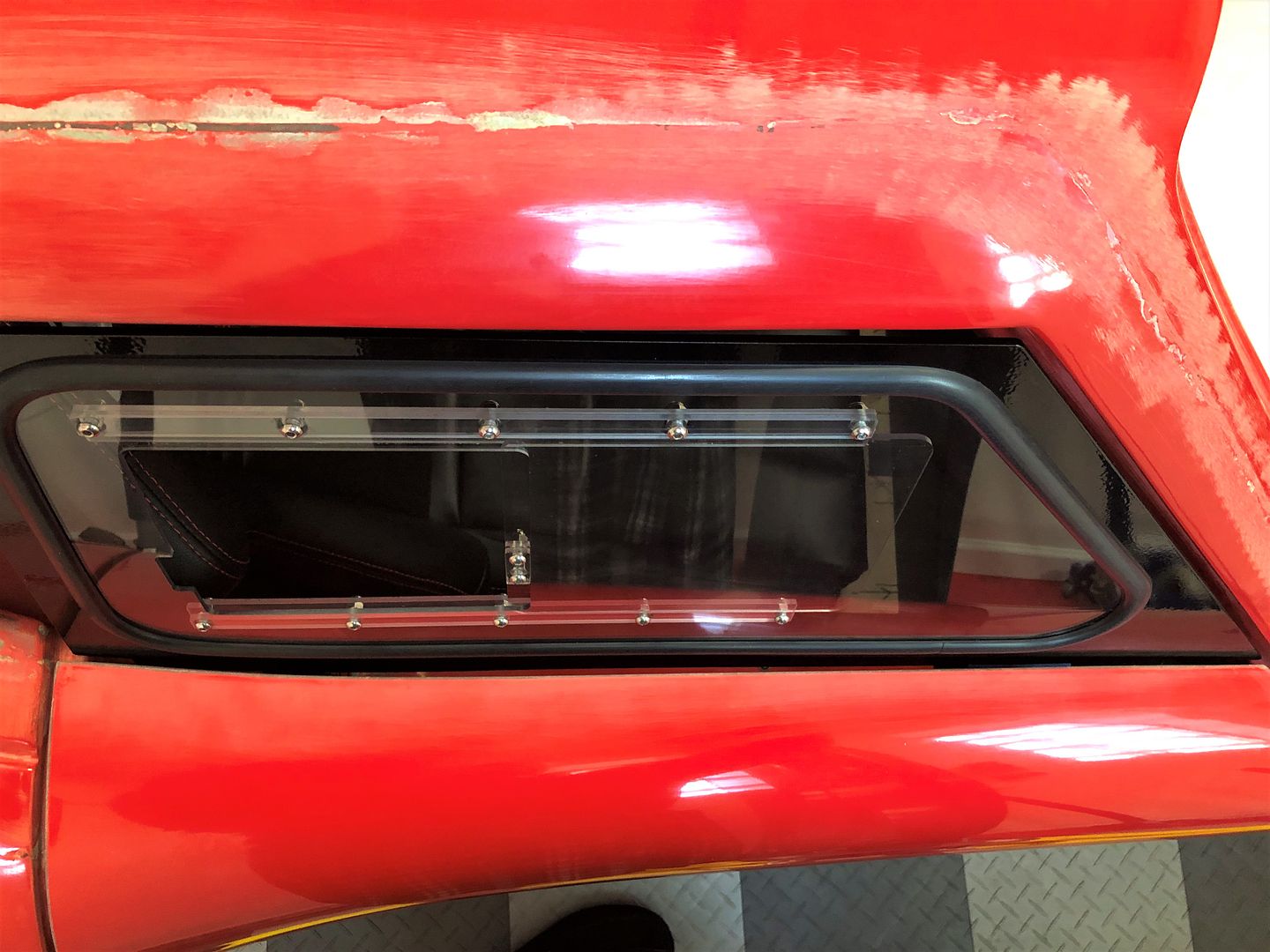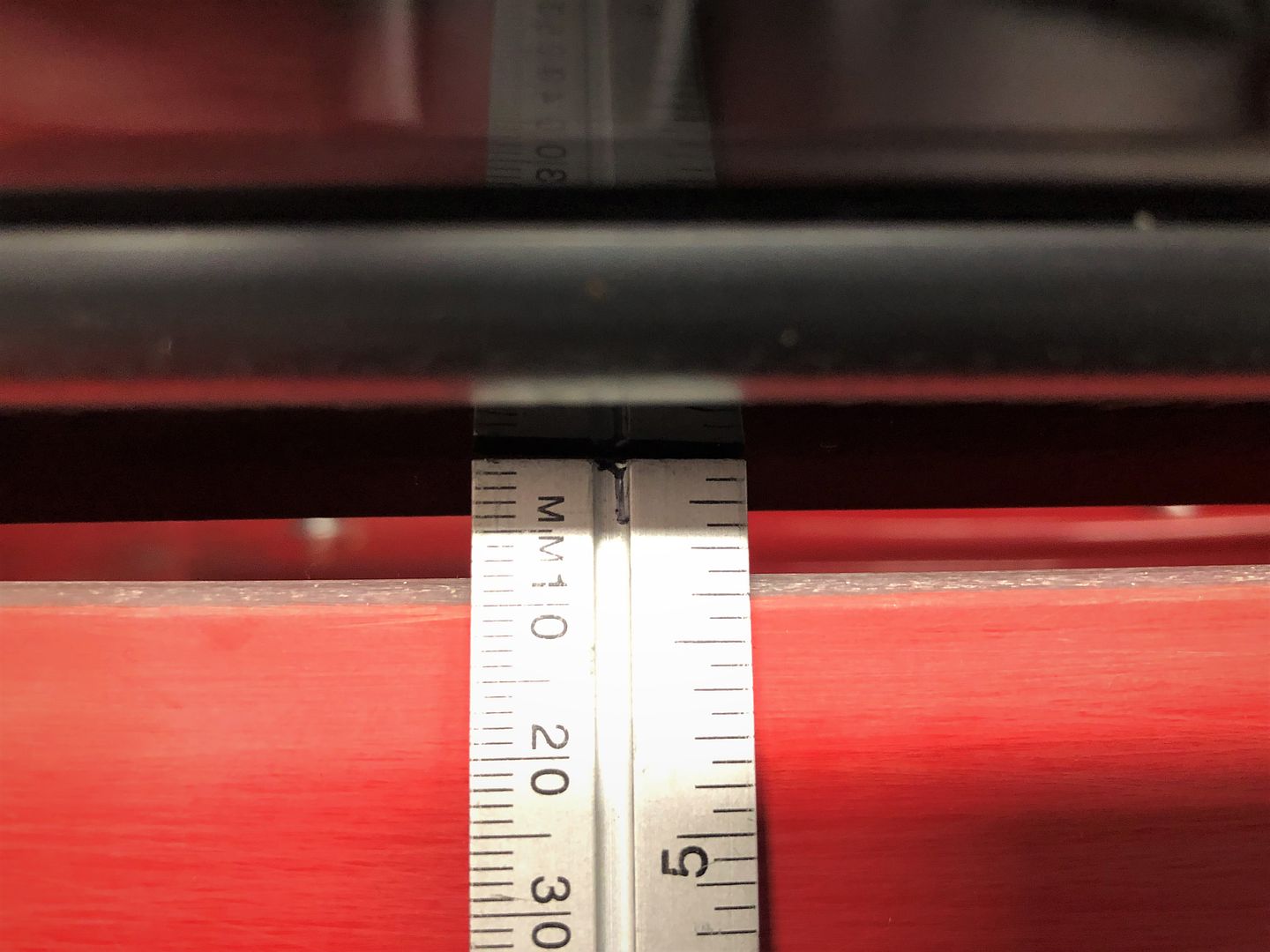Edwardb’s Gen 3 Type 65 Coyote Coupe #59 Build
Time to start another build! This will be my fourth FF build, and the first one that doesn't look like a Roadster. I’ve always had my eye on the Type 65 Coupe. When Factory Five announced the Gen 3 Coupe, I started considering it more seriously. I saw it in person for the first time at the 2017 Open House in Wareham. Then again at the 2017 London Cobra Show. I like what they've done with it, and am excited to start this all over again. I really enjoy the build process and this looks like an interesting challenge. This will be a 99% street cruiser. Of course performance is important. But also want it to be streetable and relatively comfortable. With a top and HVAC, maybe some added comfort compared to the Roadster. Still a fair weather car though and will spend Michigan winters in hibernation. I'm planning to take my time with the build. Probably in the 2 year range. The 20th Anniversary Roadster isn't going anywhere though! It's staying right here. So, something to build and something to drive. Doesn’t get better than that.
I had the first week of September circled on my calendar as the right time to order my Coupe. That fit with some other stuff going on including getting my garage and workshop rehab completed. When the time came, thank you Factory Five for announcing the first sale on the Gen 3 Coupe! I placed my order and received a November 18 completion date. I ordered the following:
Gen 3 Type 65 Coupe Complete Kit
Gloss black powder coated chassis
Body cutouts and Nose Scoops
GPS Gauge Set
31 Spline Coyote T-56 Magnum w/IRS driveshaft
5.0L Coyote Install Kit
Vinyl Roadster Seats. Will replace with high backs. TBD
2015+ Mustang based IRS
Double Adjustable Koni shocks
Black Carpet Package
Leather Steering Wheel
Front and rear swaybar
18-inch wheels (free with Fall Sale!!)
Wilwood 12.88-inch brakes front and rear, black calipers
Stewart Delivery
This is the first time I haven't picked up my kit in person. Not sure how well it would fit into my 14-foot SE plus I really don't need the long drive and mess around with sales tax which wasn't the case before. I'm still working on the details of the actual build plan. Lots of TBD's that I'll decide about as I go and start mocking things up, plus watch and learn from other builds.
Like my Anniversary Roadster build, this will be a Coyote build. Just can’t say enough good things about that engine in these cars. The Roadster is just awesome with the Gen 2 Coyote it has. With the 2018 Mustang, now in production, Ford introduced the Gen 3 Coyote. More power (of course!) and some interesting new features. Somehow Gen 3 Coupe and Gen 3 Coyote has a nice ring to it and I enjoy trying new stuff. Ford is saying they will have a crate version of the Gen 3 Coyote “sometime” in 2018. I will stay on top of it and hopefully that will work out.
I've also decided to go with a T56 Magnum to get 6 speeds plus supposedly it shifts nice. The price is only slightly more than the Liberty modified TKO's I've used on my last two builds. A little bit bigger and heavier, but looks like it fits into the Gen 3 Coupe OK.
The IRS, sway bars, shocks and brakes are all the same as on my current 20th Anniversary Roadster. Everything about that car is absolutely perfect, so I'm not changing anything there. I'll be doing heat and A/C for the first time. Still looking at options for the PS and A/C pumps on the Coyote. There are several. I'm not going to go crazy, but I want the interior to be nicely finished and detailed. Carpet, headliner, nice dash, etc. I'm going to decide about seats later as well. We'll see how that all works out.
I'm also pretty certain I'm going to try a hydraulic throw-out bearing setup. I've done a hydraulic clutch on my last two Roadster builds, and love how well it works. Plus with the Wilwood pedal box it's easy at that end. But I'm leaning towards not doing the external slave and instead doing an internal hydraulic TOB. That's what the newer Mustangs use. I've heard nothing but good things about the Tilton 6000 TOB, so that's what I'm considering. Yes, it's risky because of major tear-down in case of issues. We'll see.
So, these are the details of my build plan so far:
2018+ Gen 3 Coyote Crate Engine and Controls Pack
4 into 4 straight tube headers (TBD)
QuickTime bell housing (only option with the T56)
Ford Racing billet steel flywheel
Ford Racing / Centerforce dual friction clutch
Tilton 6000 hydraulic throw-out bearing
Tremec Magnum T-56 6-speed transmission (2.66, 1.78, 1.30, 1.00, .80, .63)
3.73 Torsen 2015+ IRS center section. Interested to try the Torsen version, plus the 3.73 ratio matches up with the T56 perfectly
Heater, defroster, and A/C (details TBD)
Heated seats if possible (orders from the boss)
Hydraulic power steering (likely Breeze rack and KRC pump)
Manual brakes (kit supplied Wilwood pedal box)
Full aluminum panel powder coat and Lizard Skin insulation
Mustang style coolant routing and aftermarket expansion tank
High finish interior including dash, gauges/switches, carpet, headliner, etc.
Cruise control (maybe)
Aftermarket wipers and washers (not Lucas)
All LED lighting, footwell lights, trunk light, backup light, center brake light in spoiler
Breeze locking cap under LeMans cap
Rigid stainless fuel and brake lines, Pro-M 3/8-inch fuel pump hangar
Floor mod above trunk (like in the Roadsters) to claim unused space above the tank, with a hinged cover
Color and stripe (if used) TBD. Thinking about blue, but I’ve said that before. Kind of stuck on candy red. We’ll see.
Received word and a picture from Factory Five that my Coupe was finished on the promised date and ready for pickup. Lost a few days due to the Thanksgiving weekend, but Stewart picked it up earlier this week and today was delivery day. Driver arrived just before lunchtime as promised, and everything is in my garage now. The backorder list is about one page long. Shorter than my Anniversary Roadster, but missing some key parts. Front LCA’s, all four IRS control arms, and toe arms. Once I complete the inventory I’ll talk to Factory Five and hopefully get some updates about the backorders. In general, the chassis and body look great. No obvious defects with the body that I can see. As noted in the title, my Coupe has serial number 59.
I’m doing this build thread with the pictures hosted on the forum. I’ve used Photobucket for some years. But because of changes they made regarding third party hosting and costs, going another direction. First pic is in the rack at Factory Five. Balance are from the delivery completed today.
![Image]()
![Image]()
![Image]()
![Image]()
![Image]()
![Image]()
![Image]()
Away we go!
Time to start another build! This will be my fourth FF build, and the first one that doesn't look like a Roadster. I’ve always had my eye on the Type 65 Coupe. When Factory Five announced the Gen 3 Coupe, I started considering it more seriously. I saw it in person for the first time at the 2017 Open House in Wareham. Then again at the 2017 London Cobra Show. I like what they've done with it, and am excited to start this all over again. I really enjoy the build process and this looks like an interesting challenge. This will be a 99% street cruiser. Of course performance is important. But also want it to be streetable and relatively comfortable. With a top and HVAC, maybe some added comfort compared to the Roadster. Still a fair weather car though and will spend Michigan winters in hibernation. I'm planning to take my time with the build. Probably in the 2 year range. The 20th Anniversary Roadster isn't going anywhere though! It's staying right here. So, something to build and something to drive. Doesn’t get better than that.
I had the first week of September circled on my calendar as the right time to order my Coupe. That fit with some other stuff going on including getting my garage and workshop rehab completed. When the time came, thank you Factory Five for announcing the first sale on the Gen 3 Coupe! I placed my order and received a November 18 completion date. I ordered the following:
Gen 3 Type 65 Coupe Complete Kit
Gloss black powder coated chassis
Body cutouts and Nose Scoops
GPS Gauge Set
31 Spline Coyote T-56 Magnum w/IRS driveshaft
5.0L Coyote Install Kit
Vinyl Roadster Seats. Will replace with high backs. TBD
2015+ Mustang based IRS
Double Adjustable Koni shocks
Black Carpet Package
Leather Steering Wheel
Front and rear swaybar
18-inch wheels (free with Fall Sale!!)
Wilwood 12.88-inch brakes front and rear, black calipers
Stewart Delivery
This is the first time I haven't picked up my kit in person. Not sure how well it would fit into my 14-foot SE plus I really don't need the long drive and mess around with sales tax which wasn't the case before. I'm still working on the details of the actual build plan. Lots of TBD's that I'll decide about as I go and start mocking things up, plus watch and learn from other builds.
Like my Anniversary Roadster build, this will be a Coyote build. Just can’t say enough good things about that engine in these cars. The Roadster is just awesome with the Gen 2 Coyote it has. With the 2018 Mustang, now in production, Ford introduced the Gen 3 Coyote. More power (of course!) and some interesting new features. Somehow Gen 3 Coupe and Gen 3 Coyote has a nice ring to it and I enjoy trying new stuff. Ford is saying they will have a crate version of the Gen 3 Coyote “sometime” in 2018. I will stay on top of it and hopefully that will work out.
I've also decided to go with a T56 Magnum to get 6 speeds plus supposedly it shifts nice. The price is only slightly more than the Liberty modified TKO's I've used on my last two builds. A little bit bigger and heavier, but looks like it fits into the Gen 3 Coupe OK.
The IRS, sway bars, shocks and brakes are all the same as on my current 20th Anniversary Roadster. Everything about that car is absolutely perfect, so I'm not changing anything there. I'll be doing heat and A/C for the first time. Still looking at options for the PS and A/C pumps on the Coyote. There are several. I'm not going to go crazy, but I want the interior to be nicely finished and detailed. Carpet, headliner, nice dash, etc. I'm going to decide about seats later as well. We'll see how that all works out.
I'm also pretty certain I'm going to try a hydraulic throw-out bearing setup. I've done a hydraulic clutch on my last two Roadster builds, and love how well it works. Plus with the Wilwood pedal box it's easy at that end. But I'm leaning towards not doing the external slave and instead doing an internal hydraulic TOB. That's what the newer Mustangs use. I've heard nothing but good things about the Tilton 6000 TOB, so that's what I'm considering. Yes, it's risky because of major tear-down in case of issues. We'll see.
So, these are the details of my build plan so far:
2018+ Gen 3 Coyote Crate Engine and Controls Pack
4 into 4 straight tube headers (TBD)
QuickTime bell housing (only option with the T56)
Ford Racing billet steel flywheel
Ford Racing / Centerforce dual friction clutch
Tilton 6000 hydraulic throw-out bearing
Tremec Magnum T-56 6-speed transmission (2.66, 1.78, 1.30, 1.00, .80, .63)
3.73 Torsen 2015+ IRS center section. Interested to try the Torsen version, plus the 3.73 ratio matches up with the T56 perfectly
Heater, defroster, and A/C (details TBD)
Heated seats if possible (orders from the boss)
Hydraulic power steering (likely Breeze rack and KRC pump)
Manual brakes (kit supplied Wilwood pedal box)
Full aluminum panel powder coat and Lizard Skin insulation
Mustang style coolant routing and aftermarket expansion tank
High finish interior including dash, gauges/switches, carpet, headliner, etc.
Cruise control (maybe)
Aftermarket wipers and washers (not Lucas)
All LED lighting, footwell lights, trunk light, backup light, center brake light in spoiler
Breeze locking cap under LeMans cap
Rigid stainless fuel and brake lines, Pro-M 3/8-inch fuel pump hangar
Floor mod above trunk (like in the Roadsters) to claim unused space above the tank, with a hinged cover
Color and stripe (if used) TBD. Thinking about blue, but I’ve said that before. Kind of stuck on candy red. We’ll see.
Received word and a picture from Factory Five that my Coupe was finished on the promised date and ready for pickup. Lost a few days due to the Thanksgiving weekend, but Stewart picked it up earlier this week and today was delivery day. Driver arrived just before lunchtime as promised, and everything is in my garage now. The backorder list is about one page long. Shorter than my Anniversary Roadster, but missing some key parts. Front LCA’s, all four IRS control arms, and toe arms. Once I complete the inventory I’ll talk to Factory Five and hopefully get some updates about the backorders. In general, the chassis and body look great. No obvious defects with the body that I can see. As noted in the title, my Coupe has serial number 59.
I’m doing this build thread with the pictures hosted on the forum. I’ve used Photobucket for some years. But because of changes they made regarding third party hosting and costs, going another direction. First pic is in the rack at Factory Five. Balance are from the delivery completed today.
Away we go!








